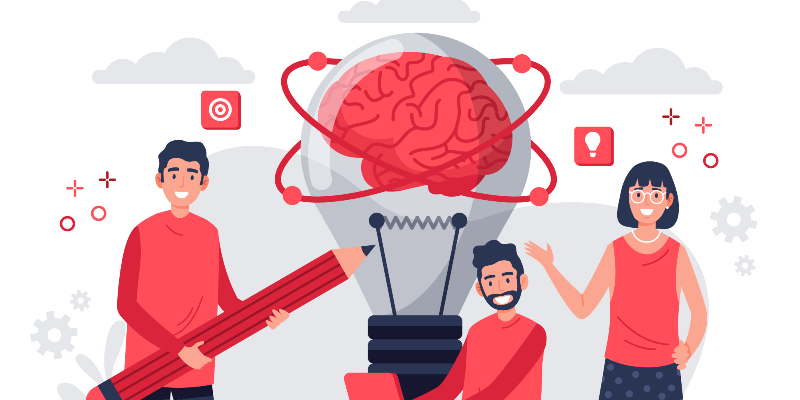

Just imagine that you have the ability to tap into the mind of a customer- you know what makes them click, make a purchase or turn away. This is what neuromarketing holds in advertising. This is no sci-fi but the science of marketing, transforming the relationship between brands and people.
In essence, neuromarketing applies the art of neuroscience or psychology with the aim of interpreting consumer behaviour better. It assists advertisers in formulating emotional marketing campaigns that not only succeed in capturing attention but also make an impact at the subliminal level. That is the competitive advantage that brands have in a digital media-overloaded world.
This blog is going to look at what exactly neuromarketing is and how it is used in the real world, and how top emotional marketing strategies can use neuromarketing to your advantage.
Neuromarketing is a combination of neuroscience, behavioural psychology, and marketing. It entails examining the way the human mind is affected by branding, adverts, packaging, and design.
Based on such tools as:
The attention forms and emotional reactions can be monitored by the marketers. This information enables the brands to perfect their messages and images to connect at a very deep level to the realm of conscious understanding.

Humans do not necessarily rationally purchase products. The reality is that decisions made are mostly emotional. It can be a comforting colour, a nostalgic jingle, or even a smile in the eyes of a model; whatever the case, it is the emotion that will stick.
This is what emotional marketing tactics are brought in. These are campaigns that have been created to harness emotions such as joy, fear, trust, excitement, or even guilt.
The reasons why they are powerful:
Neuromarketing can refine these plans by showing what works, when, and with whom in terms of emotional response.
When a taste test is conducted with the participants blinded, the participants tend to like Pepsi better. However, after uncovering branding, the majority of people lean on Coca-Cola. Why? Coca-Cola triggers the memory and emotion parts of the brain, as shown by brain scans, proving that branding and emotional associations can drown out taste.
Apple advertising is cool; it is minimalistic. That is not aesthetic, that is neurological. Clear images minimise cognitive busy work; the message can therefore be read and remembered. The subtle nature has been proven to increase clarity and yearning in the context of neuromarketing in advertising.
Emotional marketing based on fear, such as anti-smoking advertisements and a depiction of damaged lungs, is summed up by health brands. People are more apt to act with these visuals since they emotionally affect them with an immediate neurological response.
Ever thought where people would put their eyes when visiting a webpage or reading a product label? The eye-tracking technology provides such a response. This assists in creating more intelligent layouts where CTAs and offers will be put in a way where attention moves naturally.
Using micro-expressions, marketers will have an idea of how people actually feel, and not what they utter. The technique provides ad reactions optimisation and assists in making tonal, voice, and visuals adjustments to enhance emotional appeal.
Emotional response is significantly affected by colours. Trust is built through blue. Red heightens a feeling of hurry. Yellow emits hope. This knowledge has been exploited in every successful emotional marketing decision, and the case of neuromarketing, the company provides information to support decisions.
It is not just what the customers are saying, nor might they even know what would motivate them. Neuromarketing does not aim at the peripheral senses but at the centre of it all, the brain.
You may experiment in the real way people react to images or catchphrases, so you do not need to spend your money on a good advertisement.
When your brand fires off the appropriate emotional buttons--security, happiness, belonging, and so forth--every single time, then it leaves a powerful mark on the minds of your clients. As these emotional cues are repeated with time, they build a subconscious feeling of trust, value, and emotional attachment. Customers not only recollect your brand, they experience it. Subconscious loyalty is a product of this emotional pull and will result in purchases, even when there is no rational choice to consider. It is no longer the question of what you sell but how your brand makes people feel. Well, that is what neurological loyalty is all about.

Perhaps the question that is on your mind is how this can be used by a business? There, the right partner comes in. An elite emotional marketing strategies agency gathers creative skills and neuromarketing expertise to help them create smarter campaigns.
Advertising agencies in Bangalore are in a very peculiar position to know the technical backend and the emotional marketing stratergies. It is this equilibrium that is required in order to have neuromarketing work in the current cluttered digital universe.
That is only the tip of the iceberg. This is a taster of the next thing:
This is the aspect of dynamic adaptation of ads according to the reaction of the users.
The campaign variants are tested based on emotion tracking, and not merely on clicks.
100 per cent brand exposure decoded by using neuromarketing
As technology and data become more accurate and accessible, the field of neuromarketing in advertising will stop being a novelty and will enter the list of standard operations.
We no longer have to make guesses on what to work with. Brands are also able to create heart-and-brain-resonating experiences involving customers through neuromarketing in advertising. And when wrapped with careful emotional marketing tactics, what comes out is not only a message that sells, but more than that, a message that sticks.
Whether you're a growing startup or an established brand, partnering with a marketing agency in Bangalore could be the move that helps you tap into your audience’s emotions—and drive lasting loyalty.